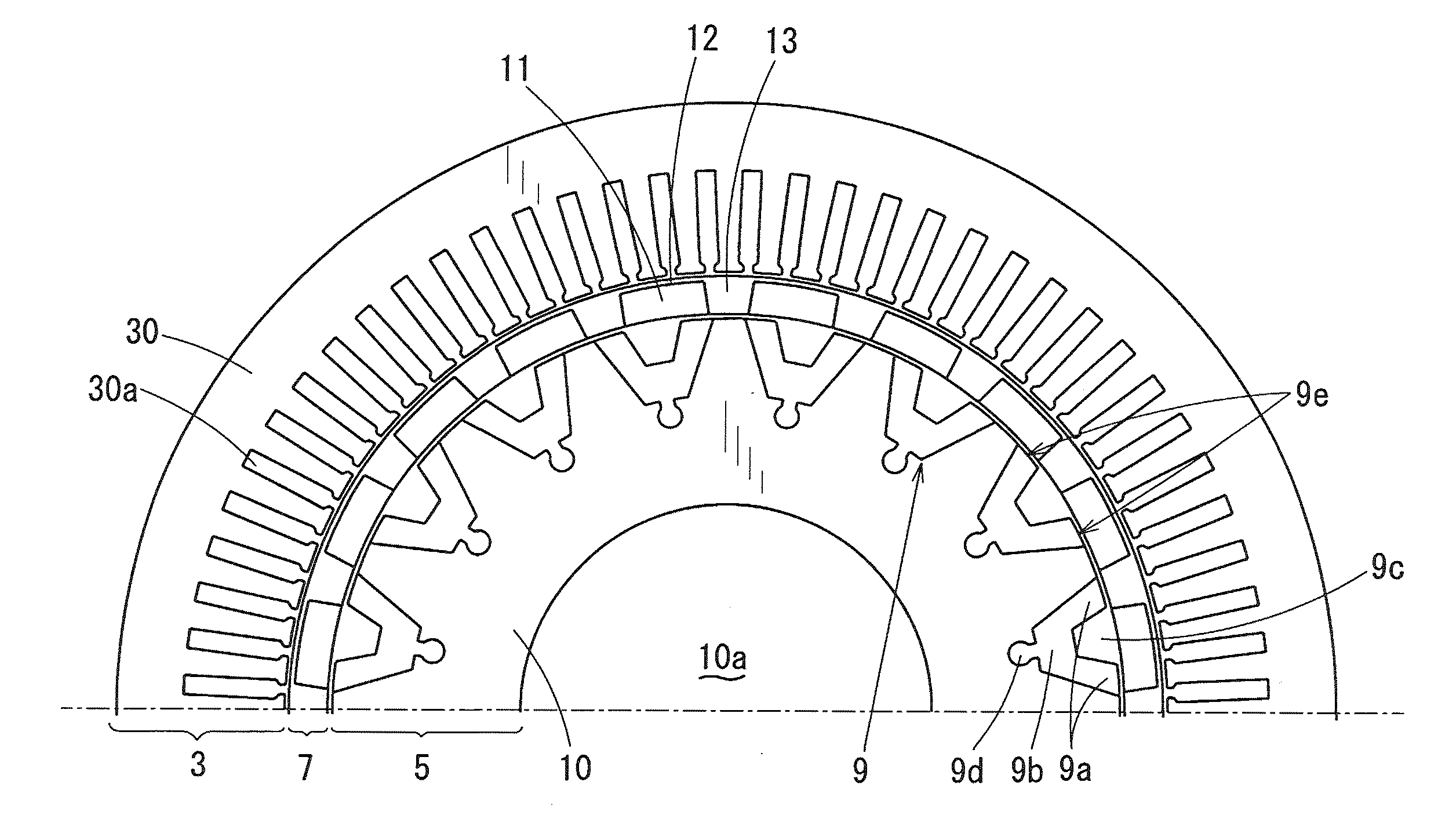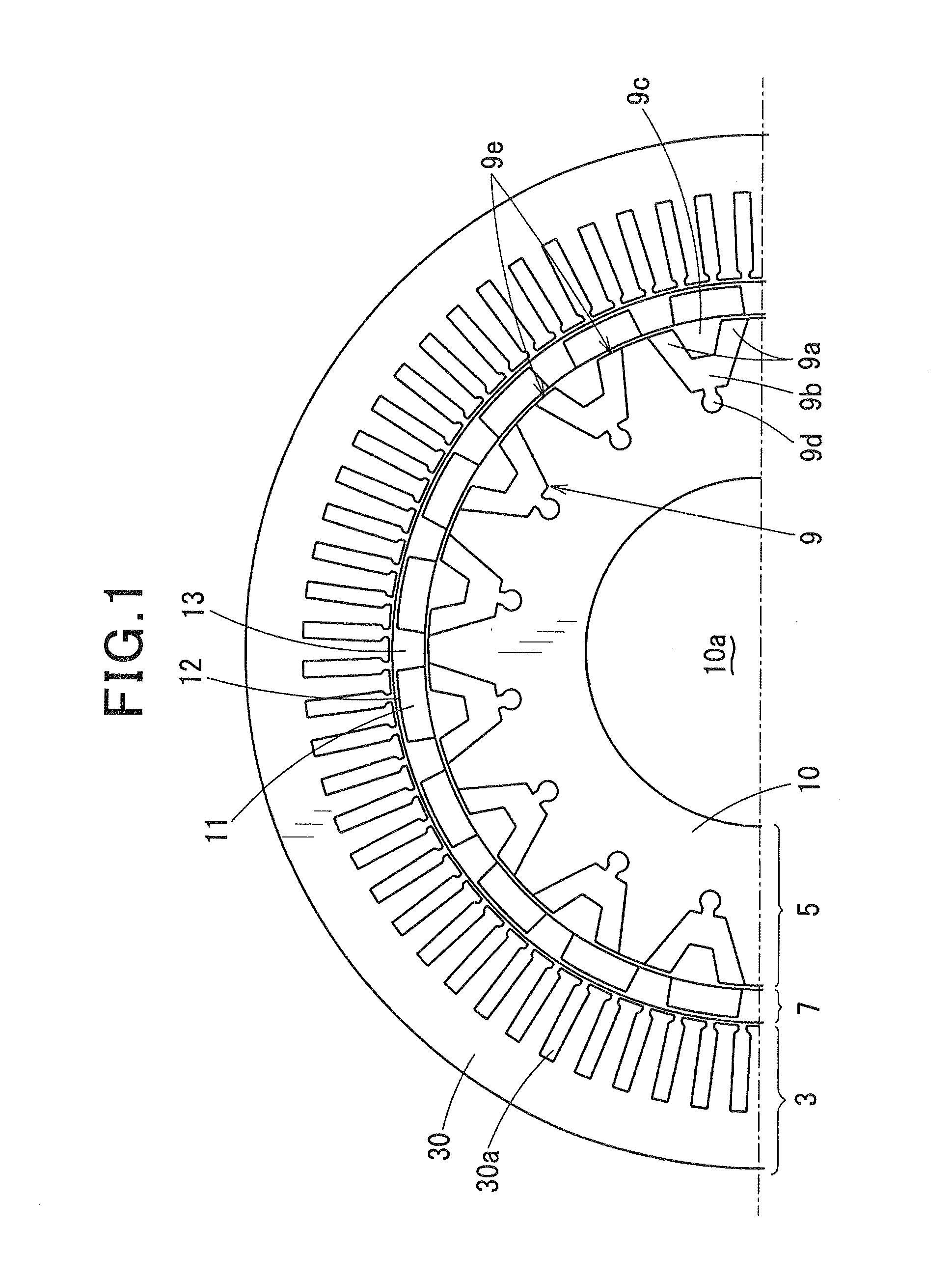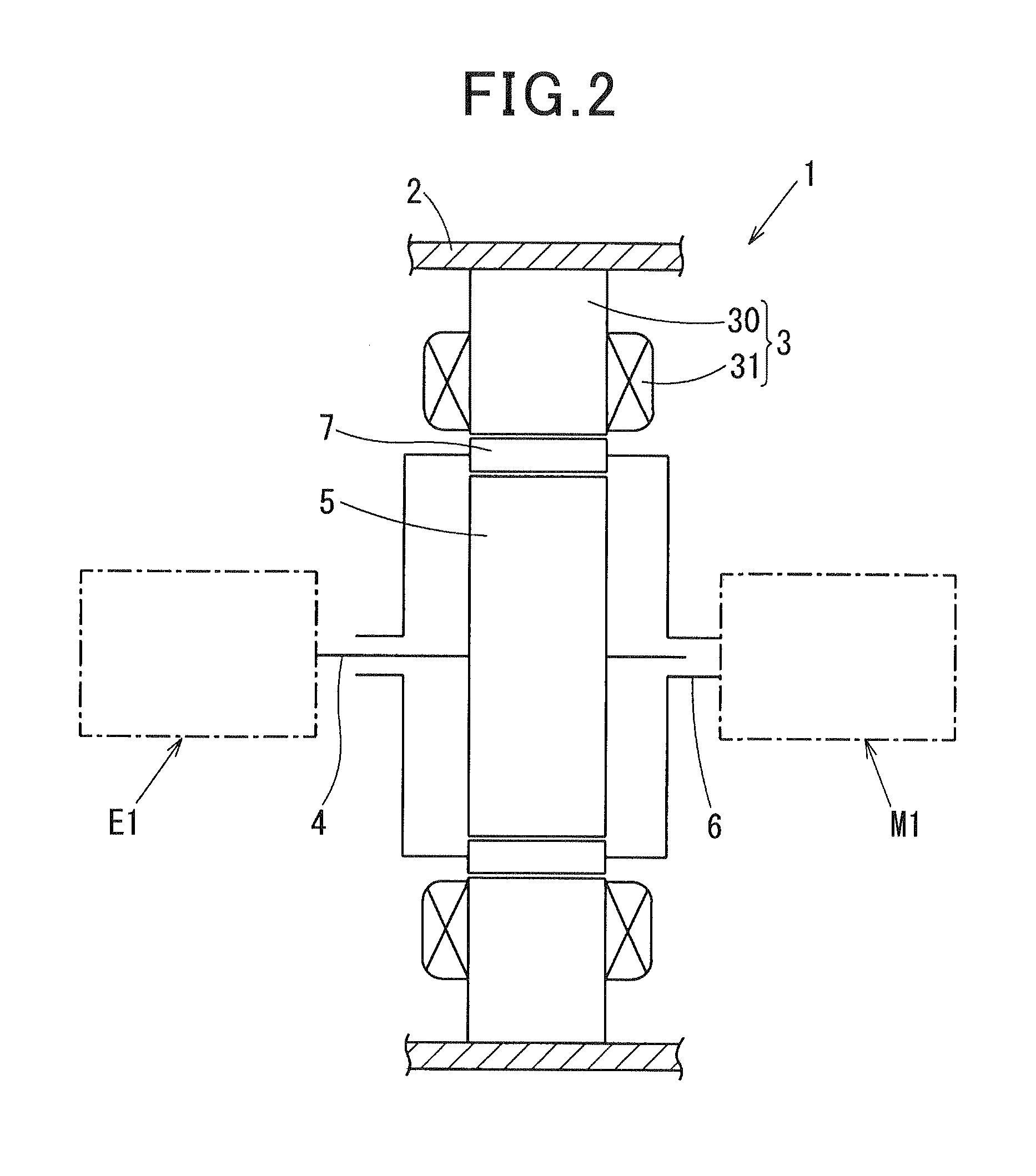Magnetic modulation motor and electric transmission
- Summary
- Abstract
- Description
- Claims
- Application Information
AI Technical Summary
Benefits of technology
Problems solved by technology
Method used
Image
Examples
first exemplary embodiment
[0133]FIGS. 1 to 4 show a magnetic modulation motor (hereinafter referred to as “motor”) 1 according to a first exemplary embodiment of the present invention, which is mounted between an engine and a transmission in a hybrid vehicle.
[0134]First, a configuration of the motor 1 is described. As shown in FIG. 2, the motor 1 includes a motor frame 2, an armature 3, a first rotary shaft 4, a magnetic induction rotor 5, a second rotary shaft 6, and a magnet rotor 7. The armature 3, the magnet rotor 7, and the magnetic induction rotor 5 are arranged in the order from the radially outer side to the radially inner side (center side) of the motor 1. The armature 3 is fixed to the motor frame 2. The first rotary shaft 4 is coupled with an output shaft of an engine E1, and is supported by the motor frame 2 in a rotatable manner via a bearing (not shown). The magnetic induction rotor 5 rotates integrally along with the first rotary shaft 4. The second rotary shaft 6 is coupled with an driven sha...
second exemplary embodiment
[0190]Referring to FIGS. 11, 12A and 12B, the second exemplary embodiment is described. In this embodiment, as shown in FIG. 11, a concave portion (recess or hollow portion) 13a is formed in the respective interpolar soft magnetic materials 13 of the magnetic induction rotor 5 described in the first exemplary embodiment.
[0191]As shown in FIG. 11, the concave portion 13a is formed in a surface of the respective interpolar soft magnetic materials 13 facing the magnetic induction rotor 5, i.e., an inner diameter face of the interpolar soft magnetic material 13 facing an outer diameter face of the magnetic induction rotor 5 via the gap between the magnet rotor 7 and the magnetic induction rotor 5. The concave portion 13a has a depth of approximately ⅔ of a thickness (i.e., a radial size) of the magnet rotor 7 and is formed into a taper shape in which an circumferential opening width is gradually widened from the deepest portion toward the inner diameter face of the magnet rotor 7.
[0192]...
third exemplary embodiment
[0197]Referring to FIGS. 13, 14A and 14B, the third exemplary embodiment is described. In the present embodiment, the magnetic induction rotor 5 is formed into a gear shape.
[0198]As shown in FIG. 13, the magnetic induction rotor 5 is configured by laminating a plurality of electromagnetic steel plates which are cut out in the form of a gear shape, and includes k tooth-shaped portions 5a which radially project toward the outside, where k is the number of tooth-shaped portions 5a. The k tooth-shaped portions 5a are circumferentially arranged at regular intervals, which form an entry and exit of magnetic flux for the magnetic path.
[0199]Next, a magnetic field analysis of the motor 1 according to the third exemplary embodiment is also performed under the same condition as the first exemplary embodiment. FIG. 14A shows a model configuration diagram of an analysis model of the motor 1 according to the present embodiment, and FIG. 14B shows a simulation result of the magnetic field analysi...
PUM
 Login to View More
Login to View More Abstract
Description
Claims
Application Information
 Login to View More
Login to View More - R&D
- Intellectual Property
- Life Sciences
- Materials
- Tech Scout
- Unparalleled Data Quality
- Higher Quality Content
- 60% Fewer Hallucinations
Browse by: Latest US Patents, China's latest patents, Technical Efficacy Thesaurus, Application Domain, Technology Topic, Popular Technical Reports.
© 2025 PatSnap. All rights reserved.Legal|Privacy policy|Modern Slavery Act Transparency Statement|Sitemap|About US| Contact US: help@patsnap.com



